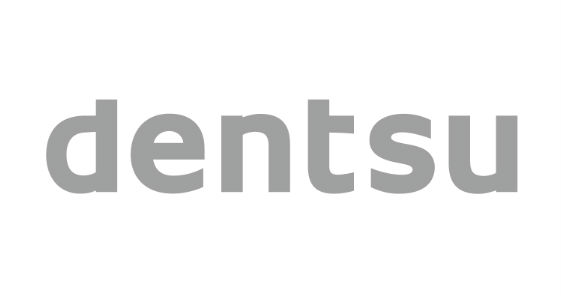TOKYO – Dentsu Inc. (Tokyo: 4324; ISIN: JP3551520004; President & CEO: Toshihiro Yamamoto; Head Office: Tokyo; Capital: 74,609.81 million yen) has released its calendar year 2017 annual report on advertising expenditures in Japan, including an estimated breakdown by medium and industry.
Based on Dentsu’s survey, Japan’s advertising expenditures for 2017 totaled 6,390.7 billion yen, an increase of 1.6% compared with the previous year’s figure. Accompanying Japan’s continuing economic growth in calendar 2017, overall spending on advertising posted year-on-year gains for a sixth consecutive year.
Overview of Advertising Expenditures during 2017
1. The 1.6% full-year growth rate for overall advertising expenditures in 2017 was underpinned by sustained, gradual expansion in the Japanese economy, which benefitted from the convergence of an array of positive factors. These include recovery in the global economy, rising corporate earnings, an improvement in the employment environment, weakening of the yen exchange rate, and a vigorous stock market. In particular, robust spending in Internet advertising drove overall expenditure growth. Across the advertising market as a whole, the transformation to digital advertising media advanced on a range of fronts, as integrated communication platforms that leveraged the particular characteristics of each medium became more conspicuous.
2. Broken down by medium, advertising expenditures fell in Newspapers (down 5.2%), Magazines (down 9.0%), and Television (down 0.9%; including both Terrestrial Television and Satellite Media-related spending), and rose in Radio (up 0.4%). As a result, overall spending in the traditional media posted a decline of 2.3%. In Internet advertising expenditures (up 15.2% including medium expenditures and production costs), growth of performance-based ads and video ads directed at users of mobile devices was particularly strong. Hence, growth in the Internet medium remained the key driver for advertising expenditures overall. Although spending on Promotional Media decreased (down 1.5%), growth was recorded for Outdoor, POP, and Exhibitions/Screen Displays and other sub-categories.
3. By industry category (for the traditional media, but excluding Satellite Media-Related spending), year-on-year spending rose in 6 of the 21 industry categories.
Major categories posting gains were Real Estate/Housing Facilities (up 8.9% on increased placements for general housing); Energy/Materials/Machinery (up 8.0% on placements for ads related to gas market liberalization); Information/Communications (up 1.7% on increased placements for web content and smartphones); and Automobiles/Related Products (up 1.5% on stronger advertising for station wagons/hatchbacks, K-cars (engine displacement up to 660 cc) and SUVs).
Major categories posting declines included Home Electric Appliances/AV Equipment (down 11.4% on decreased advertising for vacuum cleaners, and hair styling and beauty appliances); Precision Instruments/Office Supplies (down 11.2% on decreased placements for wristwatches and digital cameras); Distribution/Retailing (down 9.7%) on decreased placements for general merchandise stores and convenience stores; Government/Organizations (down 8.1% on fewer placements for advertising industry organizations and foreign governmental and public agencies); Apparel/Fashion, and Accessories/Personal Items (down 8.0% on decreased advertising for casual wear).
– Outline of Advertising Expenditures by Medium
Spending on Internet advertising (medium expenditures and production costs) reached 1,509.4 billion yen (up 15.2%), posting double-digit growth for the fourth consecutive year. In particular, there was a further acceleration in growth for performance-based ads and video ads aimed at users of mobile devices. Internet advertising expenditures accounted for 23.6% of spending in all media, a rise of 2.8 percentage points compared with 2016. Internet advertising medium costs amounted to 1,220.6 billion yen (up 182.8 billion yen, or 17.6%).
Advertising expenditures in the traditional media (including Satellite Media-Related spending) during the 2017 calendar year totaled 2,793.8 billion yen, down 2.3% compared with the previous year, showing a third consecutive year of decline. Spending in Radio increased 0.4%, to 129.0 billion yen, the second straight year of growth.
Although Promotional Media spending decreased 1.5% compared with the previous year’s amount, to 2,087.5 billion yen, recording a decline for the third consecutive year, the two sub-categories of Outdoor, and Exhibitions/Screen Displays, posted their sixth straight year of growth.
– Quarterly Breakdown of Growth in Advertising Expenditures in the Traditional Media in 2017
A quarterly breakdown of advertising expenditures in the traditional media (including Satellite Media-Related spending) shows a decline of seven consecutive quarters compared with the corresponding period of the previous year. However, the percentage recorded for the 2017 Oct. – Dec. quarter (down 0.9%) was close to the previous year’s level.
(Year-on-year, %)
Advertising Expenditures in the Traditional Media (including Satellite Media-Related Spending)
(2016 Full Year) Jan.-Jun. Jul.-Dec. Jan.-Mar. Apr.-Jun. Jul.-Sep. Oct.-Dec.
99.6 100.2 99.1 100.9 99.4 98.9 99.3
————————————————————————————————————
(2017 Full Year) Jan.-Jun. Jul.-Dec. Jan.-Mar. Apr.-Jun. Jul.-Sep. Oct.-Dec.
97.7 97.6 97.8 98.2 96.9 96.5 99.1
– Outline of Advertising Expenditures by Industry (21 Categories, Traditional Media Only, Excluding Satellite Media-Related Spending)
Advertising expenditures increased in 6 of the 21 industry categories surveyed during 2017, and declined in 15 categories. (The 2016 survey shows that expenditures were higher in 9 of the 21 industry categories, but lower in 12 categories.)
Expenditures posted increases in the following six categories: Real Estate/Housing Facilities (up 8.9%) on increased placements for general housing; Energy/Materials/Machinery (up 8.0%) on demand for campaigns related to gas market liberalization; Information/Communications (up 1.7%), driven by ad placements for web content and smartphones; Household Products (up 1.6%) on increased advertising for insecticide and functional mattresses; Automobiles/Related Products (up 1.5%) on stronger advertising for station wagons/hatchbacks, K-cars (engine displacement up to 660 cc) and SUVs; and Beverages/Cigarettes (up 0.8%) on higher placements for lactobacillus beverage products, functional mineral water, and diet/nutritional drinks.
Expenditures declined in the following 15 industry categories: Home Electric Appliances/AV Equipment (down 11.4%) on decreased advertising for vacuum cleaners, and hair styling and beauty appliances; Precision Instruments/Office Supplies (down 11.2%) on decreased placements for wristwatches and digital cameras; Distribution/Retailing (down 9.7%) on decreased placements for general merchandise stores and convenience stores; Government/Organizations (down 8.1%) on fewer placements for advertising industry organizations and foreign governmental and public agencies; Apparel/Fashion, Accessories/Personal Items (down 8.0%) on decreased advertising for casual wear; Food Services/Other Services (down 6.3%) on fewer placements for restaurants and law firms); Cosmetics/Toiletries (down 5.4%) on reduced ads for shampoos and conditioners, direct-marketed cosmetic lines for women, and fabric softeners; Finance/Insurance (down 4.5%) on lower placements related to credit cards, cash advances, and direct-marketed insurance products (cancer insurance, auto insurance); Publications (down 3.5%) on fewer placements related to publication releases and specialist hobby magazines; Pharmaceuticals/Medical Supplies (down 3.5%) on decreased placements for analgesics and antipyretics; Classified Ads/Others (down 3.4%) on decreased demand for classified ads; Transportation/Leisure (down 3.2%) on decreased advertising for travel agencies, domestic airlines, and movies; Education/Medical Services/Religion (down 1.7%) on fewer placements for correspondence education programs and schools); Hobbies/Sporting Goods (down 1.1%) on fewer placements for game software and audio recordings; and Foodstuffs (down 1.0%) on decreased placements for direct-marketed products (dietary supplements and health foods).









